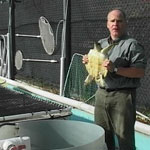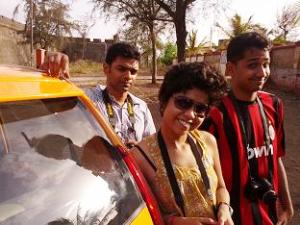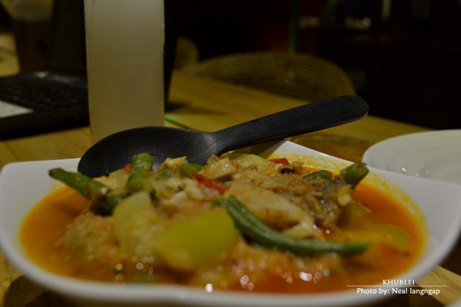“Very dear to me is the muga bobbin,
Very dear is the shuttle;
Dearer still is the Bihu of Bohag,
Could I do without it?”
Well, like every year with the cuckoo’s call, Rongali or Bohag Bihu has come and gone this year too. However, with every passing year it makes me more and more nostalgic and goads me on to long for a past that has been buried without any possibility of retrieval. At least to me, someone brought up in once a culturally very vibrant upper Assam city, not only Rongali Bihu but the other two Bihus—Magh Bihu and Kati Bihu, have also lost much of their natural charm over the years. With same emotion and anticipation I await all the Bihus, but they no longer enthral me as they used to till the seventies of the last century. As I understand, it’s all because of our own doings and Nature is not to be blamed at all. Our materialistic outlook has blinded us to appreciate whatever Nature still offers us to maintain our physical and mental equilibrium.
We no longer celebrate Rongali Bihu with the spontaneity of the past, we just use it as a commodity now. Magazines sell us stories about Bihu and television channels bombard us with endless Bihu programmes. Plus, there are hundreds of very high-budget Bihu functions throughout the month and even beyond. People lap all these up to the extent of over-eating. To me it appears that Bihu has been relegated to a kind of money game—more money involved the merrier. Come Bihu and most of the well-known groups of Bihu dancers from across the State flock to the capital city of Guwahati not to ‘celebrate’ but to ‘compete’ because their television-aided ‘market value’ is more in this one of the filthiest cities of the world. The tradition of visiting house to house by Bihu and Husori groups has become a rarity even in the upper Assam, where decades back, Bihu meant spontaneous expression of the exuberance of Spring time. In our city I observe Bihu and Husori groups now deliberately visiting only the politically powerful and other well-to-do families for obvious reasons.
But it was not like that a couple of decades back. Similarly, most of the Bihu delecacies are now purchased from the market, which are not as tasty as those prepared at home. Dheki, used for making pithaguri, sandoh, aakhoi, sira etc. has been removed from most of the houses of our towns. So is the plight of the loom in our towns and gamosasare to be bought from the market and their exchange has become just a mechanical exercise devoid of any emotional attachment. Moreover, since there is hardly any grazing ground for cattle in our towns now, people have given up the practice of keeping cows at home. Naturally, today’s children living in the urban areas of Assam have no practical knowledge of Goru Bihu. They are deprived of revelling in the collective bathing of cows and exchange of Saat with their neighbours. Digholoti, Makhiyoti, Tora Pogha (new tether) are just some unintelligible words for them.
I was fortunate to be a part of that old delightful culture, but for my college-going son, it’s just an organized show to be enacted every year on the television screen on that very day. Last year, I explained to a group of children that Saat Bihu or seven-day long Bohag Bihu has seven names signifying each day and they are Goru Bihu, Manuh Bihu, Haat Bihu, Senehi Bihu, Maiki Bihu, Rongali Bihu and Sera Bihu. But, it made no impact on the youngsters besotted with computer games and cartoon shows. To me at least, Rongali Bihu has been thoroughly gobbled up by the ‘on-stage’ Bihu functions of our cities and towns in such a manner that it is like a commodity now to be relished by us as consumers. The television channels of Assam run amuck during the Bihu days and dance to the tune of TRP trumpets. The high-profile Bihu pundits as judges on these channels pontificate as if an agriculture-based folk-culture can be edified through some rigid rules and regulations. I and my ilk squirm in disgust.
Can a rootless, consumerist society without a track record of producing anything worthwhile (for both consumable apples and non-consumable apples we have to depend on the hard work of outsiders) will ultimately survive the onslaught of globalization? The proponents of modernization will advocate for fusion, but what is the glory of being at the receiving end only?
The same feeling of sadness engulfs me in Magh Bihu and Kati Bihu too. The mirth and the sense of sacredness associated with these two Bihus have also become spurious, more so in our towns and cities. The scenario in our villages also cannot be said to be hunky-dory. In Magh Bihu the community feast of the past is seldom to be found and even less importance is given to the ceremonial burning of Meji, the next day. About the sacred Kati Bihu, the less said the better. Even our own sagacious state government found it proper to equate its status with Chaat Puja(unheard of in Assam a few years ago)by declaring half-holiday for government establishments on both the occasions. So much for the glory and protection of Assamese culture — our Bapoti Sahon!
Even at the risk of being dubbed as a cynic, I must reiterate that all the three Bihus are gradually losing their old lustre and natural appeal. The aversion to hard work of our people and the resultant greed for easy money; showcasing of culture with the motivated patronage of the corporate sector; mindless aping of western culture in the name of modernity and an unfeeling government — all these forces are working in tandem to kill the true essence of Bihu. What we see on the television screen – either on the make-shift stages here in Assam, or in Gurgaon, Dubai, London or New York in the name of celebration of Bihu, is just a process of tactful commodification of Bihu in a sleek package, as alluring as their other advertised commodities.
To justify, I can point out that I no longer see a truly community-loving Husori group in my neighbourhood, which will perform in all the houses, rich and poor, without any consideration of pecuniary benefit. May be, the tradition is still being kept alive honestly in some obscure villages by a handful of people. I also not see a genuine longing for Meji in today’s children and for that spectacular skyrocketing Akaas Bonti beside the venerable Tulsi plant in Kati Bihu. This erosion of Assamese ethos makes me crestfallen and apprehensive of a weird culture that will only serve selfish interests.
Or should we accept anything in the name of global transformation, fusion and modernity? I wonder.







































